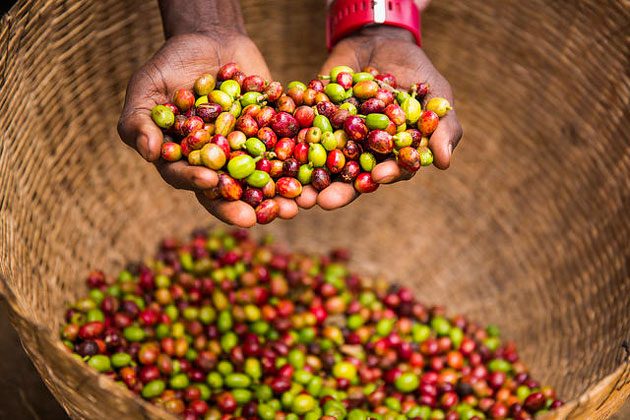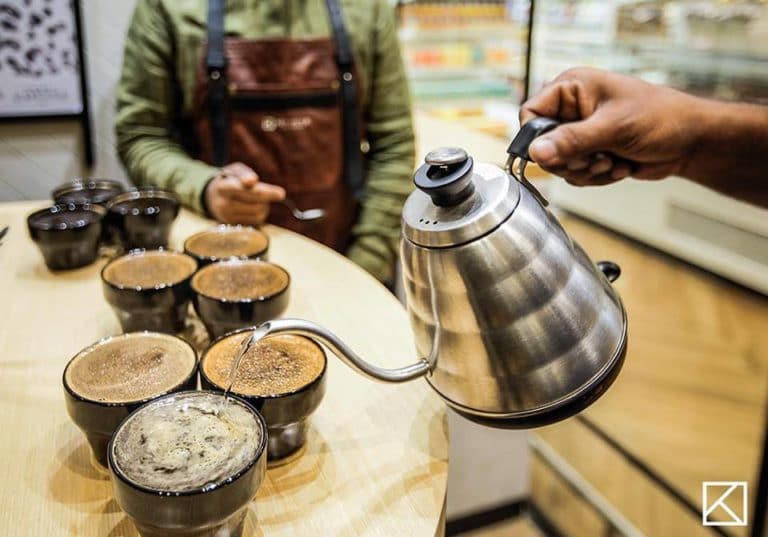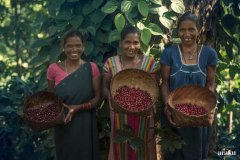What is the flavor and taste characteristics of Java coffee and monsoon coffee beans introduction to Kenya Java Coffee Brand
What is Java coffee?
Wow, coffee has so many names! It is commonly called Joe, and coffee is also popularly known as Java. Coffee originated in the Ethiopian province of Kafa, named after the Arabic quahwah, meaning "drink from berries". Is Java another form of the word Kaffa? Who called coffee java first?
Java is the name of an Indonesian island between Sumatra and Bali. The name java means home or far away. It is very suitable for growing coffee. The drink comes from far away and is located on the mountainous equator, and its geography and fertile land create an ideal microclimate for growing coffee. Since 1699, the region has been producing coffee and spreading it around the world.
Coffee may be the drink of choice for many people today, but it was not introduced into Western society and widely used until hundreds of years ago.
In 1696, the Dutch East India Company brought coffee seedlings to Batavia (now Jakarta), their former capital on the island of Java. By 1706, the first sample of Java coffee, along with a coffee tree, was sent to Amsterdam for sampling.

Tidbits: this plant is cultivated by Hortus Amsterdam Botanical Gardens and is the ancestor of coffee plants brought to Brazil and the Caribbean!
In the 19th and early 20th centuries, Java coffee became more and more popular. This is one of the reasons why Java has become synonymous with coffee.
In most cases, the Dutch ruled Indonesia between 1627 and 1942. Their main interests are the development of commercial and plantation agriculture, especially coffee. They implemented a forced labor system that was very successful in Java.
By the 19th century, Java became the world's largest producer of Arabica coffee. The disaster occurred in the late 1880s, when a plague destroyed many coffee crops.
After the plague destroyed most of the Arabica plants, the Dutch introduced Robusta. Compared with Arabica coffee beans, this is usually considered inferior coffee beans, but because it can resist the diseases that afflict Arabica coffee beans, it is beneficial.
Eventually Arabica coffee production returned to the island. Although the Java coffee imported into the United States and Canada is mainly Arabica coffee, Robusta coffee still accounts for 90% of Java coffee production.
Java gained its independence in 1949 and is the most developed island in Indonesia. Traditionally, Java has been dominated by the elite, while the lower classes are engaged in agriculture. Although Java is being modernized, only 75% of the island has electricity.
Coffee has promoted the development of the island. A railway network was established because of the need to transport coffee from the plantation to the port. Even today, Java helps Indonesia to be the fourth largest coffee producer in the world after Brazil, Vietnam and Colombia.
Java has four of the largest coffee plantations: Djampit, Blawan, Pancoer and Kayumas, which together produce 85 per cent of East Java coffee.
Java Arabica coffee
Although Java is another term for a cup of coffee, it is also a specific type of Arabica coffee bean. As you may have guessed, Java Arabica coffee grows on the ljen plateau of about 1400 meters in Java and Shanghai.
This kind of coffee is wet processed (washed). This means that selectively picked green coffee cherries are washed immediately after harvest while remaining moist to remove fruity substances from the coffee. This process produces a very clean taste; however, it can cause coffee to lose a lot of body.
Java Arabica coffee has a full-bodied effervescent body, nutty aromas, bright acidity and a long finish. It has a rustic taste, with a hint of nuts, malt, chocolate, bright and sweet.
Java coffee is also known as monsoon or aging. This "monsoon" process exposes unroasted raw coffee beans to the moist, warm air of the rainy season. This process can last as long as three years!
Monsoon coffee beans create an excellent drink. The acidity weakens, resulting in a sweeter wooden barbecue flavor, a stronger wine with almost no acidity.
Kenya Java Coffee

Java House, commonly known as "Nairobi Java", opened its first store in Adam's Arcade, Nairobi, in 1999. In order to introduce a delicious coffee drinking culture in Kenya, the original store was a coffee shop, then the brand evolved into an American restaurant style restaurant, until now, it has become a coffee-dominated three-day leisure catering concept.
Java House is now one of the leading coffee brands in Africa and has stores in 14 cities in three East African countries (Kenya, Uganda and Rwanda). It also gave birth to two sister brands, Planet Yoghurt, a healthy, delicious and interesting frozen yogurt shop and a casual restaurant 360C pizza.
Important Notice :
前街咖啡 FrontStreet Coffee has moved to new addredd:
FrontStreet Coffee Address: 315,Donghua East Road,GuangZhou
Tel:020 38364473
- Prev

Introduction to the story of the seven major coffee brands in India the flavor and taste of Indian monsoon sun-treated coffee beans are special.
India has long been a grower of coffee beans. In fact, it is the world's sixth largest coffee producer. But in most parts of the country, the vast majority of Indians prefer to start their day with tea, and traditionally, if you order coffee in a restaurant, you are more likely to get a sad cup of Nestle coffee than real coffee. But in recent years, this situation has been achieved.
- Next

Indian shade tree coffee Arabica Busta beans compare spicy coffee beans?
The world's best shaded-growing mild coffee Indian coffee is the most extraordinary drink, offering charming subtlety and exciting intensity. India is the only country that grows all its coffee in the shade. These coffees are usually mild and not very sour, with exotic flavors and delicate aromas. Indian coffee also has a unique historical flavor! It all started about 400 years ago.
Related
- Detailed explanation of Jadeite planting Land in Panamanian Jadeite Manor introduction to the grading system of Jadeite competitive bidding, Red bid, Green bid and Rose Summer
- Story of Coffee planting in Brenka region of Costa Rica Stonehenge Manor anaerobic heavy honey treatment of flavor mouth
- What's on the barrel of Blue Mountain Coffee beans?
- Can American coffee also pull flowers? How to use hot American style to pull out a good-looking pattern?
- Can you make a cold extract with coffee beans? What is the right proportion for cold-extracted coffee formula?
- Indonesian PWN Gold Mandrine Coffee Origin Features Flavor How to Chong? Mandolin coffee is American.
- A brief introduction to the flavor characteristics of Brazilian yellow bourbon coffee beans
- What is the effect of different water quality on the flavor of cold-extracted coffee? What kind of water is best for brewing coffee?
- Why do you think of Rose Summer whenever you mention Panamanian coffee?
- Introduction to the characteristics of authentic blue mountain coffee bean producing areas? What is the CIB Coffee Authority in Jamaica?

